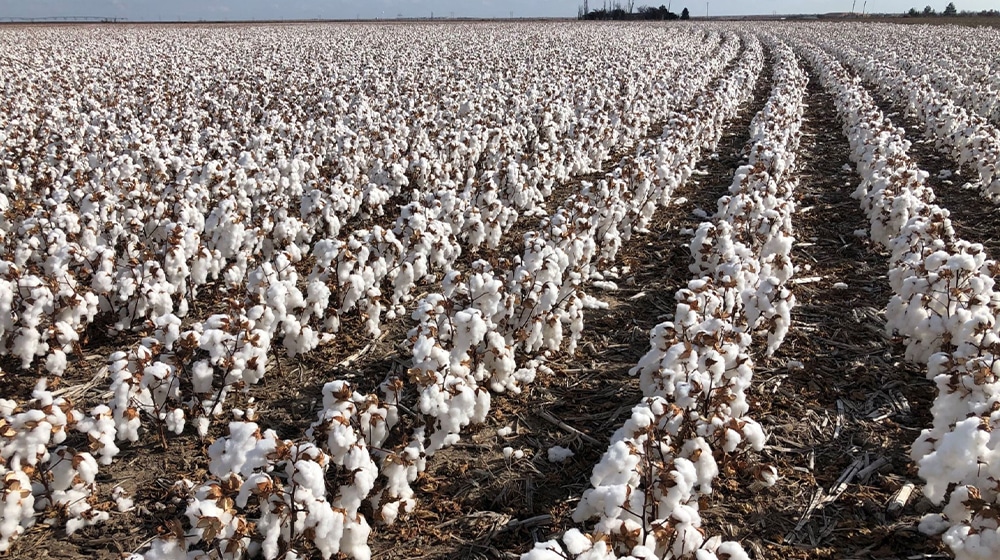Pakistan’s cotton industry is reviving due to promising weather conditions and increased cultivation, countering the devastation of last year’s flash floods.
A recent report by Karachi-based brokerage Insight Securities highlights a promising start to the new cotton season and the arrival of a robust crop, instilling renewed optimism in a sector that faced challenges in the previous year, including catastrophic floods and subdued textile demand.
According to the report, cotton sowing has seen a substantial rise of 34 percent year-on-year, encompassing 2.767 million hectares by June. This surge in cultivation is expected to yield 12.77 million bales, a significant jump from the previous year’s 4.91 million bales. The anticipated yield per hectare stands at an impressive 785 kg, surpassing the decade-long average of 658 kg.
The cotton and textile sector is a crucial indicator of Pakistan’s economy, accounting for more than 60 percent of total exports and employing 40 percent of the workforce. This year’s gains are the result of favorable weather patterns, particularly timely monsoon rains in July, which have aided crop growth and reduced pest incursions. Although the monsoon has not yet ended, the crop is still under threat of rain.
In tandem with this positive trajectory, the Pakistan Cotton Ginners Association reported the arrival of 1.4 million bales of cotton by July, signifying an early influx of the new crop. The government established a support price of Rs8,500 per maund (40 kg) to incentivize cotton cultivation, but market dynamics have led to lower actual prices ranging between Rs. 7,000 to Rs. 8,500 per maund for multiple reasons.
To maintain market stability and ensure an ample domestic supply, the state-owned Trading Corporation of Pakistan (TCP) has undertaken the decision to purchase one million bales from farmers.
It should be noted that Pakistan’s textile exports encountered a setback in fiscal year 2023, contracting by 15 percent YoY to $16.5 billion, a drop from $19.3 billion during the corresponding period of the prior year. It was caused by diminished demand fueled by economic uncertainties in the West, particularly in the US and Europe, gas shortages, heightened working capital costs, reduced cotton arrivals, and uncertainties regarding exchange rates.
The government’s ambitious target of achieving textile exports worth $25 billion for fiscal year 2023 is tempered by the current domestic and global headwinds, dimming the industry’s immediate outlook.






















why non refunding of sales tax is not mentioned for the reason in the decline in exports?